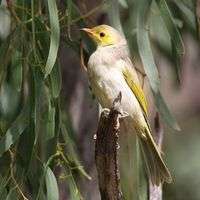River declines now causing havoc in birdlife in Australia

(PhysOrg.com) -- The slow death of one of Australia's iconic wetlands is causing dramatic upheavals in its bird populations, with species from surrounding farmland moving in to replace many small woodland birds as they lose their habitat, a new study has found.
Their loss is adding to the widespread decline of woodland birds as a result of land-clearing and also reveals how regulation of rivers and diversion of water are having serious unintended consequences for bird communities, say researchers at the UNSW Australian Rivers and Wetlands Centre (ARWC).
The study was based in the Macquarie Marshes, where large areas of river red gums are stressed or dead. Water diversion from river systems has meant that they are no longer receiving the critical floodwaters they need to survive and regenerate.
Woodland birds that usually forage for insects among river red gum canopies, such as crested shrike-tits, white-plumed honeyeaters and little friarbirds, are disappearing from this and probably other similarly affected wetlands in eastern Australia.
River red gum woodlands provide habitat for a diverse group of woodland bird species, including four that are listed as vulnerable in NSW: the brown treecreeper, diamond firetail, hooded robin and grey-crowned babbler.
The study found that the species making up the woodland bird community are changing as river red gums decline in health. Small insect-eating birds, such as the rufous whistler and grey fantail, that forage in foliage are most affected by these changes and declined in numbers. Some species - such as jacky winters and crested pigeons - that favour cleared areas have increased in number.
In the long term, as dead red gum trees fall and decompose, the habitat is likely to be less suitable even for some of these birds.
"When you stand in a forest of dead trees, you get a stark view of the impact of our water policies on these systems," says one of the researchers, Alice Blackwood. "The entire habitat is changing. As the trees are dying, dense native shrubs are moving in, while the coverage of herbs, leaf litter and aquatic plants is decreasing. These represent huge changes for small woodland birds."
AWRC Director Professor Richard Kingsford says significant changes to aquatic ecosystems in the rivers of the Murray-Darling Basin are well known, "but this is one of the first times we have found much wider impacts into birds that aren't normally associated with rivers."
River red gum decline is already widespread in the Murray-Darling Basin, and it is likely that birds are being similarly affected in these areas, says Blackwood: "Given that woodland birds are already declining throughout south-east Australia it is important that action is taken to ensure the future of remaining habitat,"
Professor Kingsford comments: "Governments are addressing these issues by buying back water, which will certainly improve the amount of environmental flow to these red gum forests but it is also important that such broad issues are considered in the new Murray-Darling Basin plan."
The bird species declining are:
white-plumed honeyeater; brown treecreeper; eastern yellow robin; rufous whistler; little friarbird; crested shrike-tit; grey faintail.
The bird species increasing are:
Jacky winter; crested pigeon; rufous songlark; hooded robin; yellow thornbill; diamond dove.
More information: The report is available for download at www.wetrivers.unsw.edu.au/
Provided by University of New South Wales















